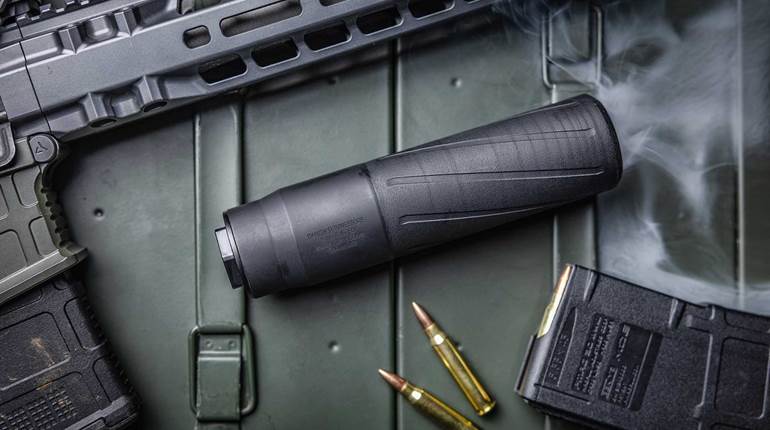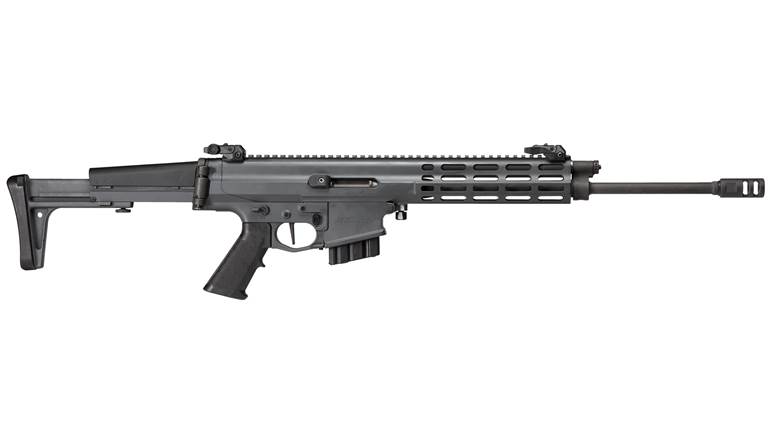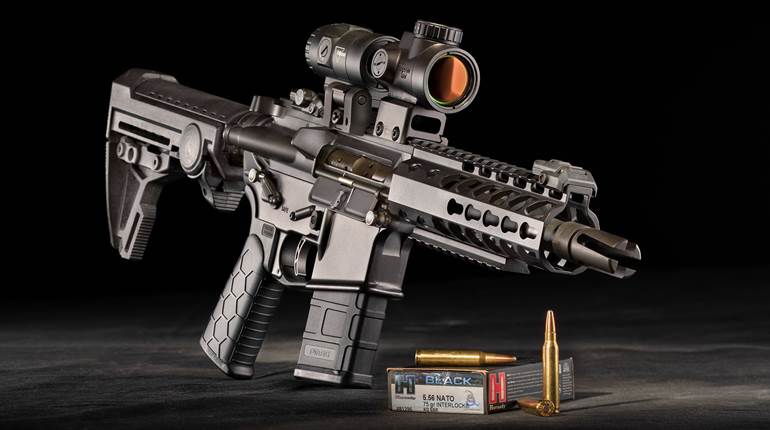
When semi-automatic Kalashnikov-type rifles started coming into the United States during the 1970s, 7.62x39 mm was not an abundantly available cartridge. The Valmet M62/S from Finland came first, followed by the Maadi ARM from Egypt, but both guns were expensive and therefore out of reach for the average shooter. The combination of high cost and the ammunition availability problem meant that the Kalashnikov remained a bit of a niche item. But right at about the time that Maadi ARMs started coming into the country, State Arms Factory 366 in the People’s Republic of China began producing a semi-automatic version of the Type 56 Kalashnikov known as the 56S. Basically just a Chinese copy of the Soviet AKM, the 56S features a stamped sheet-metal receiver, 16.4" chrome-lined barrel, high-polish blued finish and wood furniture. The industrial conglomerate China North Industries Corp., better known as Norinco, exported the 56S to the U.S. market at a price point so low that it could be retailed for half the cost of either the Valmet or the Maadi. This fundamentally transformed the popularity of the semi-automatic Kalashnikov in the United States because, suddenly, a model was available in large numbers, and it was affordable. Availability of the 7.62x39 mm cartridge began changing at about the same time as Chinese-made ammunition began entering the U.S. market as well.
China was not exactly an economic powerhouse back then, and the country was attempting to change that with a little good, old-fashioned capitalism. By branching out and expanding into markets heretofore untouched by Chinese industry, the PRC was attempting to gain strength in the global economy. Accordingly, it sought to develop products that could be sold into the lucrative U.S. market, and Norinco eventually played a role in that initiative. Although its 56S was successful, the company recognized that it could reach even more customers in the U.S. if it offered a version of the gun in 5.56 NATO, a cartridge that was abundantly available there.
To that end, the engineering team at Factory 366 came up with a design that received the designation Norinco 84S. For the most part, the gun presents the same general appearance as the 56S because it has the same overall length and is built around a stamped sheet-steel receiver. In addition to that, the 84S uses the same hooded front sight base, the same 45-degree gas block, the same fire-control components, the same wood furniture and the same high-polish blued finish. Like the 56S, it is equipped with a chrome-lined 16.4" barrel and uses the rotating bolt and long-stroke gas piston that made the Kalashnikov design famous.
There is, however, a major visible difference that is the result of the change to the 5.56 NATO cartridge: the proprietary 30-round magazine’s noticeably less curvaceous profile. In addition to that, the 84S incorporates a spring-actuated firing pin and a birdcage-type flash suppressor, neither of which are features of the 56S design. Norinco exported a standard model of the 84S equipped with a fixed wood stock, as well as sub-variants equipped with under-folding and side-folding stocks, designated 84S-1 and 84S-2, respectively, and black Bakelite furniture with the designation 84S-3. The 1989 import ban forced Norinco to make some big changes to the rifle, but the desirable pre-ban examples were imported for one year and one year only—1988—and they were all imported by China Sports Intl. in Los Angeles. These rifles are still out there to remind us of a time when Beijing’s ambition to become economically powerful led it to create a Kalashnikov tailor-made for the American market.
Gun: Norinco 84S
Chambering: 5.56 NATO
Serial No.: 407051
Manufactured: 1988
Condition: NRA Excellent (Modern Gun Standards)
Value: $2,200






















![Winchester Comm[94]](/media/1mleusmd/winchester-comm-94.jpg?anchor=center&mode=crop&width=770&height=430&rnd=134090756537800000&quality=60)
![Winchester Comm[94]](/media/1mleusmd/winchester-comm-94.jpg?anchor=center&mode=crop&width=150&height=150&rnd=134090756537800000&quality=60)












